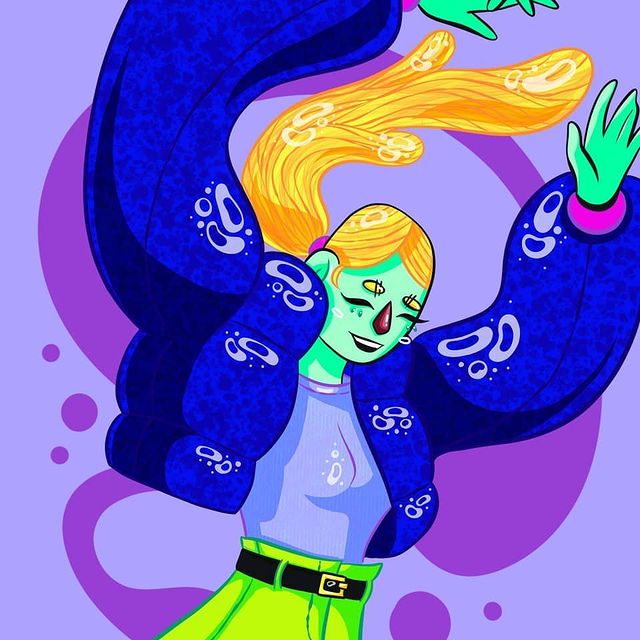
Nicole Mattia (Lodi, 1999) is a Graphic Design and Art Direction student at NABA (Milan), where she is attending her last year. There, she is refining her photography and digital art skills. Her passion for colours drives her to always find a new medium to express her point of view of the world. For the digital exhibition Sign of the Times, she has presented two photographs from the series Memory of Touch (2020).
In this conversation with the curator Belen De Bacco, Nicole discusses her experiments with photography and calligraphy, the role of music in her creative process, the significance of touch and the need for its rediscovery in the post-pandemic world.

Nicole Mattia, artist 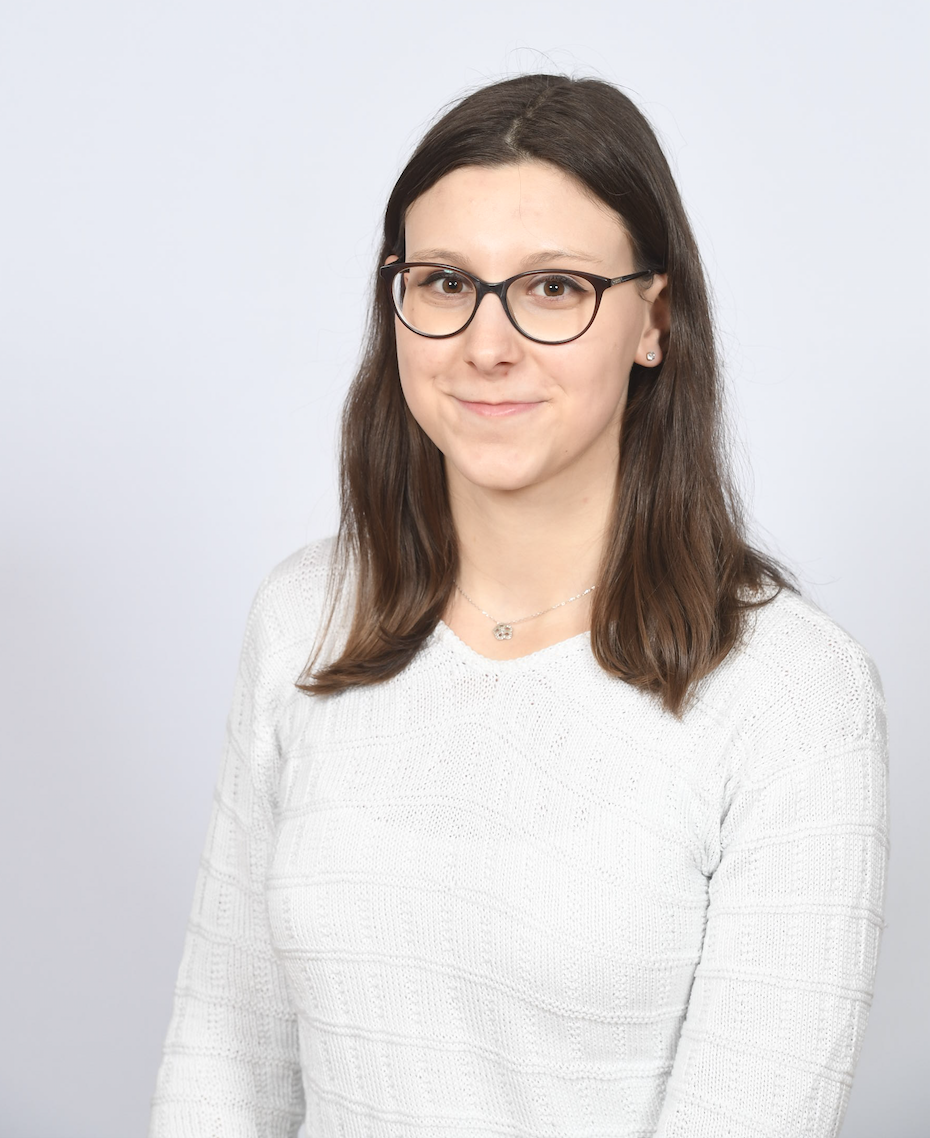
Belen De Bacco, curator
Belen De Bacco: You are one of our selected artists featured in Sign of The Times, our first digital exhibition. What was your first reaction to the theme of the exhibition? What was your perception of the year 2020?
Nicole Mattia: This is also my first exhibition, so I did not exactly know what to expect from this experience. Everything started as a way to challenge myself and get in touch with other artists. To be honest, I did not think I would even make it to the final selection. 2020 was a lot, both emotionally and mentally. Many events took place that left a deep mark in my personal history. The most difficult part was not being able to see my boyfriend and my friends. This long period of time without having physical contacts with my boyfriend was (and still is) a really big challenge for our relationship. Even though we live quite far away and we are used to spending limited time together, the pandemic stripped away even this little time we had. This strange and difficult situation is my main inspiration for the photographs I presented at Sign of The Times. However, it was an opportunity to get to know many new people online and experiment with new projects which I have wanted to do for a long time for which I would not have had enough time to actually work on them in normal circumstances.
BDB: Your series Memory of Touch (2020) explores social distancing from a new perspective. What is the main message you want to convey?
NM: My main idea was to try not to get used to physical distancing. The idea originated from my personal experience of missing people and friends. I wanted to have a look at the past and at the same time dream about a “normal” future. I fear that even when it will be possible to meet with people in person again, some will be reluctant to get close and hug you, maybe even experiencing uneasiness while doing so. This photography series could be seen as a way of re-educating ourselves to the use of touch but also a way to show what I was missing the most: physical contact. These photographs are both a memory of something I deeply miss and a wish I have for the future. In 2020 a lot of things have changed, some forever, but physical touch is something that can never get out of fashion nor be replaced in any other way. Since the very beginning of humankind, it has never become outdated and will never do in the future. In a way, we will always need some time to get used again to the physical realm of relationships.
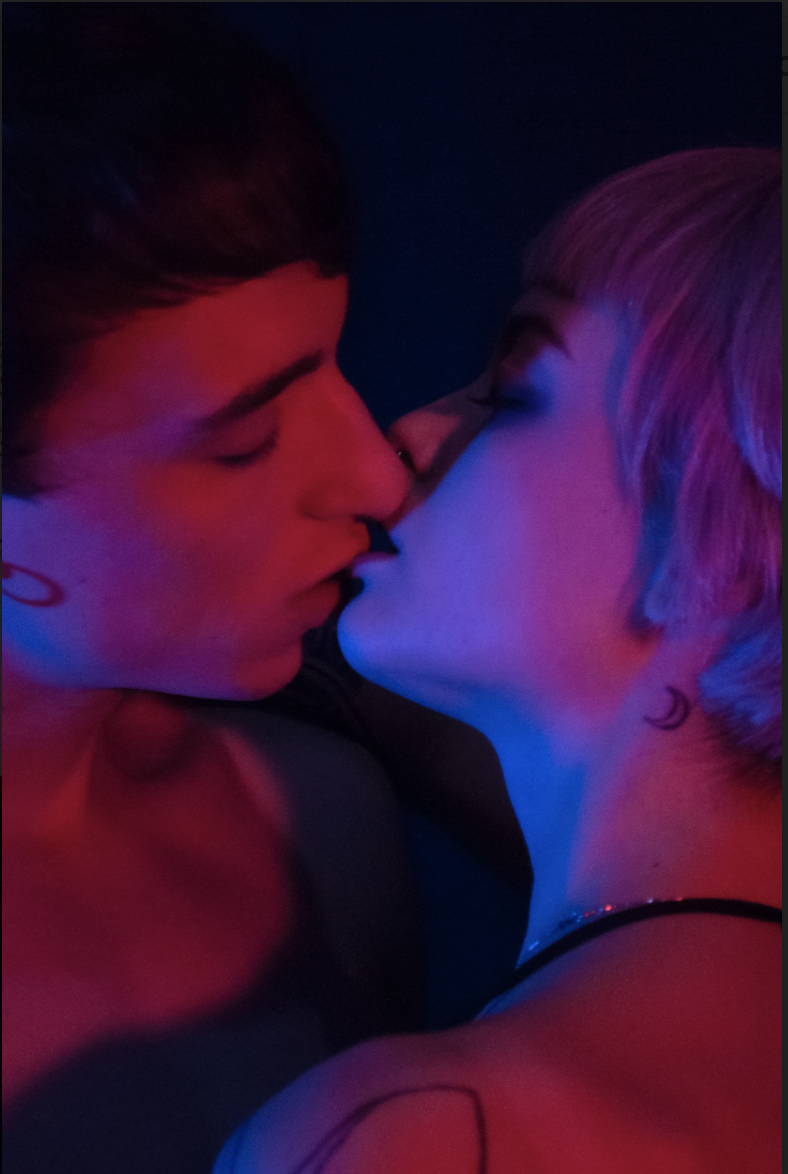
Photograph from Memory of Touch series, 2020. 
Photograph from Memory of Touch series, 2020.
BDB: How would you describe this rediscovery of touch in this “new normal” – could it be compared to becoming virgins again?
NM: The rediscovery of touch is a rebirth. After such a long time in which we were not allowed to touch each other, we will need to get used to it again. This could be compared to becoming younger, feeling the urge to try it and experiencing something that will feel like new again. We will need to be re-educated and re-discover the sense of touch. I still get a weird feeling when watching movies including people without masks and meeting at the pub. It is strange to see “normality” again.
BDB: How did the idea for the series Memory of Touch (2020) originate? Are there any particular artworks this series were inspired by?
NM: Classical artworks were an inspiration for the visual aspect of this series, specifically Catholic classical statues that interpret touch in a meaningful and powerful way. In particular, what struck me about these classical artworks is the artists’ ability to render the appearance of real skin and clothes. The statues look so real that you feel tempted to touch them and feel how the marble has been carved; you cannot see these statues as being just material entities, you can actually perceive the warmth of the bodies depicted. Michelangelo’s Pietà (1497-1499) inspired me for its gentle touch. Bernini’s Ecstacy of Saint Teresa (1647–1652) explores the sensual and intimate levels, becoming borderline erotic, which I think expresses very well what I wanted to communicate through my photographs.

Right: Photograph from Memory of Touch series, 2020.
BDB: At the digital exhibition, the predominant medium is photography. Are there any other mediums you have experimented with? If so, how do you decide between these mediums when creating an artwork?
NM: I have started doing photography in October 2020, therefore fairly recently because of a course I had started at university. It is still a work in progress, I am continuing to experiment with it. I have started creating art in a traditional way, drawing with pencil and paper since I was a child. I am very passionate about bright and sharp colours and digital art allows me to work with the brightest and sharpest colours without shading. Another big passion of mine is music; I sing and play the guitar and just like art, music is a way of expressing my feelings, transcending language and barriers. I choose the medium of my artworks depending on what comes naturally to me. I like to just let things flow, I never push things to go in a specific direction. In fact, I like to approach the same concept through different mediums, such as drawing, writing and music. I like mixing all of them because together they render the complete image of the concept I am trying to express.
Credit: @nik.jar99
BDB: What is music’s role in your creative process?
NM: It is a crucial part of it; for example, when I am doing a photo shooting there is always music, and not whatever is playing on the radio but a personal selection that connects to the theme of the photo shooting. The Memory of Touch (2020) series contains references to songs by Afterhours [an Italian alternative rock band] such as Pelle [Skin] which deals with the topic of touch and the inability to touch someone, which is described in the song in a very destructive way. But sometimes there is not an intentional reference to these songs; while I am creating, music becomes part of this process almost unconsciously and the link between music and art becomes visible only when the artwork is completed. It becomes a re-discovery of my own pictures as well.
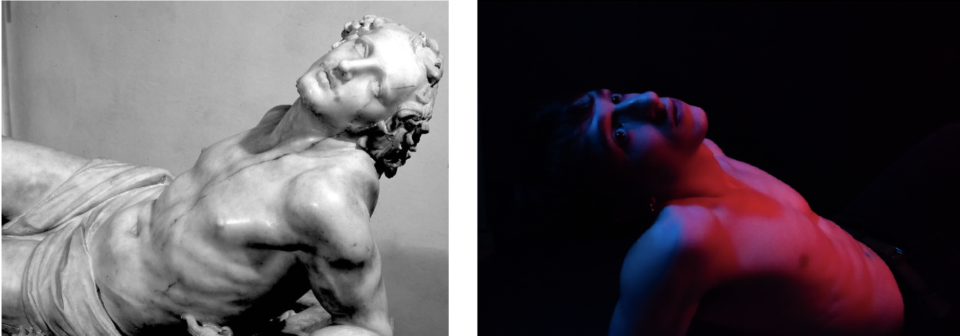
Right: Photograph from Memory of Touch series, 2020.
BDB: You study Graphic Design and Art Direction at NABA, which was nominated Best Italian Academy of Fine Arts (according to the 2021 edition of QS World University Rankings® by Subject Art&Design). Tell us more about your experience at NABA and the reason behind choosing Graphic Design and Art Direction? What do you feel like you had the opportunity of learning there?
NM: What I like the most about NABA is the openness of the entire study plan. You have the opportunity of studying a varied curriculum and get a sense of everything, which really helps you understand your passions and what your career prospects are. At NABA, we have both theoretical and practical lessons about history of art, media theory, semiotics and photography, 3D art, video making and much more. This type of study plan helps you create your own path and explore all the possibilities within that sector. I feel like you can fully explore your artistic side, especially through the practical courses. I chose to study graphic design because I was interested in the visual aspect of things, placing art in a context in which it is of practical use in everyday life in contrast with a museum display. The 1984 Apple commercial was mind-blowing for me and that made me ask myself: how is this commercial able to reach everyone without having to go to a museum, becoming accessible to everyone, even while being on the couch at home? What fascinates me is the fact that the commercial is very short so the viewers are able to experience art in less than a minute from the comfort of their home. This made me realize that everyday life can become artistic and that I wanted to study graphic design, specifically creative direction which is more related to advertising.
BDB: What do you find special about photography that you cannot find in other mediums? Are there any specific ideas or concepts that you can only express through photography?
NM: The photography course at NABA allowed me to study the basic language of the medium. I discovered the Aesthetic of New Media, specifically the concept of Nonhuman Photography by Zylinska. I like the fact that photography allows you to see yourself in a unique way which is impossible through other mediums; Zylinska said that thanks to the camera you can see what the human eye cannot experience. But photography is also a way to get to know yourself better and allows you to experience a moment in which you are not conscious about yourself. I have been experimenting with long exposures and techniques such as slow synch because it offers the possibility to see something that is the furthest away from what the human eye is able to see.
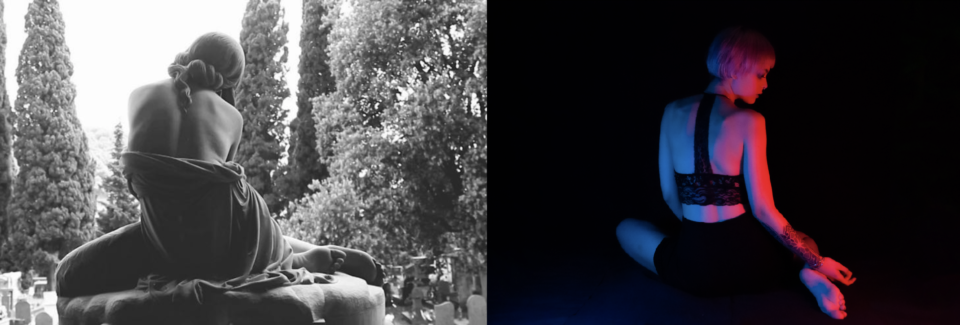
Right: Photograph from Memory of Touch series, 2020.
BDB: You have recently started a project experimenting with calligraphy. Could you tell us more about it?
NM: Calligraphy is very difficult and takes a long time to perfect. I am currently working on single letters while the finished product would integrate additional challenges such as the spacing between these. It may appear as a detail but in reality, the eye does perceive when spacing is not correct. I started being fascinated by calligraphy while looking at old manuscripts and perceiving the perfection and detail within these works. In my graphic design courses, I learned that different fonts change the meaning and the way this is communicated; the same word can be written in different fonts and this will affect the way the word is perceived. I have carried out several calligraphy experiments at NABA, which consisted of observing the same word written in different fonts and from these fronts we had to guess the personality of the font. It was very funny to compare the answers and realise that there were similar responses to the fonts. This shows the importance of fonts and the way they can communicate. In the future, I would like to experiment more with calligraphy and typography.
Credit: @nik.jar99
Discover more about Nicole’s artworks in the Sign of the Times exhibition on Relevo’s website. Make sure to follow and support Nicole on @nik.jar99. To discover more about the exhibition, check out @relevoarts and @artgateblog.

